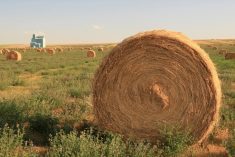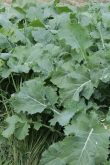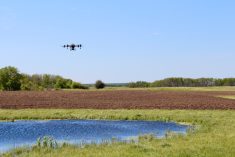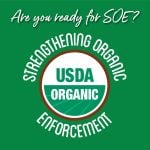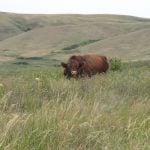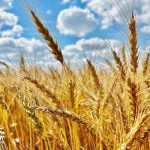Forage and grassland farmers now have a practical, straightforward resource to discover best management practices for maximizing soil carbon sequestration. The Canadian Forage and Grassland Association (CFGA) published the digital guide, Forage Best Management Practices for Enhancing Soil Organic Carbon Sequestration, earlier this year as one of the key deliverables of its four-year Agricultural Greenhouse Gases Program (AGGP) project.
“The manual covers all of Canada, which is a massive range of agricultural ecosystems, so it is broad,” says author Mackenzie Rathgeber, a Nova Scotia graduate student investigating grazing intensity management and carbon sequestration. “It provides a general base of knowledge that could guide growers to other sources based on their personalized interests and needs.”
Read Also
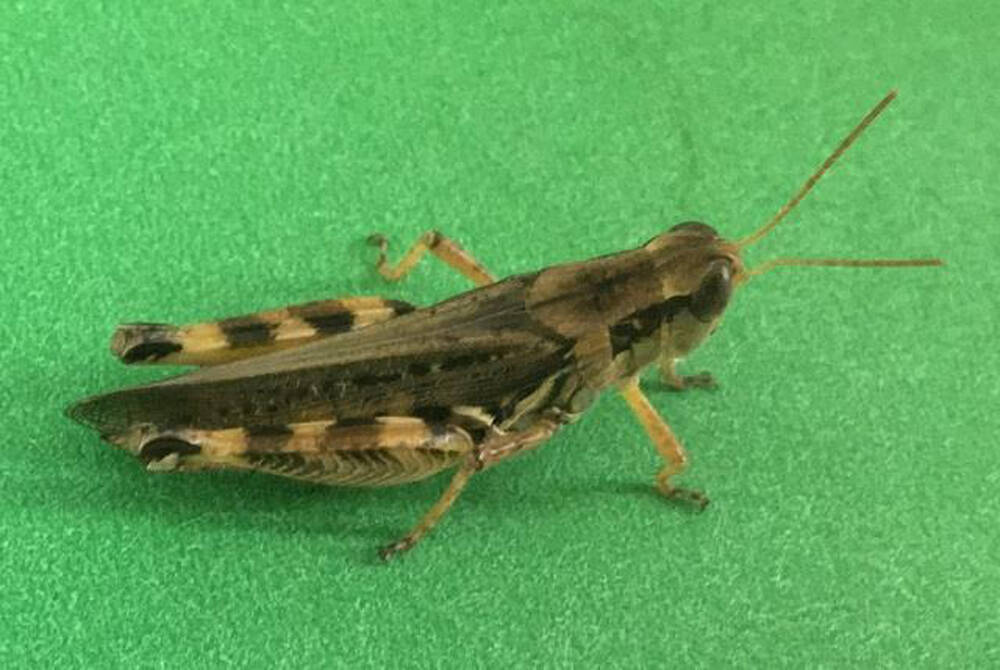
What pests are bugging your forage crops?
Manitoba Agriculture entomologist John Gavloski highlights several key insect pests that can affect forage crop production and shares strategies for managing them.
The manual also serves as a guide for growers interested in best management practices to promote economic and environmental benefits from forage.
“It is a great starting point where growers can become inspired and create new, innovative ways to further Canadian forage production and research,” Rathgeber says.
She advises producers to use the manual to identify strategies which may be the best fit for them, and then to reach out to other sources for more details and to create a personalized strategy.
‘How-to guide’
“Whatever practice you’re looking for, whether it be for stored forage or grazing systems, establishing new pastures or rejuvenating old pastures or forage ground to have the least greenhouse gas emissions impact possible, then this guide will help you to do that.”
The manual includes a comprehensive explanation of carbon trading and features 10 BMPs within five management principles — improved forage genetics, improved grazing management, forage harvest management, forage stand management and advanced cropping systems. Each BMP is presented in an easy-to-print format and includes details on how to implement them. For example, the management principle on improved forage genetics includes BMP 2 on purpose-built mixtures for forage resilience, for pollinators and for land reclamation.
“It explores moving away from traditional monoculture, or very simple seed mixtures, to more calculated moderately diverse mixtures, and how, if growers evaluate what could best suit their specific growing conditions, they could reap benefits in their forage productivity, soil health and forage resilience — a growing concern with a changing climate,” says Rathgeber.

The section on forage mixtures for pollinators explains how mixtures could be built or altered to help favour the diversity and abundance of pollinators, while another section covers purpose-built forage mixtures for land reclamation.
“Using forages to reclaim degraded land can be a great way to begin the process of restoring soil health and gain productivity from otherwise unproductive land,” says Rathgeber. “The use of native species in conjunction with land reclamation would also bring additional benefits, as they are well adapted to local climate, and using native species could help restore native grassland.”
This BMP also looks at the benefits of including a native legume into a forage mixture, since they are well adapted to local soils and climate.
The third management principle, forage harvest management, contains BMP 6, harvest management to maximize productivity. This looks at how forage harvest management can directly influence the amount of greenhouse gas produced by animals and sequestered by plants.
“Strategies to improve harvest management are important actions to limit the magnitude or rate of climate change and its related effects,” says Rathgeber. “Strategies include increasing the number of cuts per growing season and the timing of harvest.”
Providing value
“The need for perennial forages in rotation, or in cropland rotation, is huge for soil health and improvement,” says Lastiwka, adding that with forage acres dropping, there is a great need for skilful forage use that allows for animal integration and producing a higher-value crop.
“Forages need to be the centrepiece and the key profit centre of livestock operations. The use of forages in rotation, or solely on land that is challenged for grain production, is required for the future of agriculture, climate change mitigation or just resilience for profitable managers due to the adverse climate conditions that occur in a wet and dry climate we have in Canada.”
British Columbia Forage Council (BCFC) general manager Serena Black also sat in on the technical advisory meetings to help review the principles and provide feedback. Black says the manual has become a useful tool for the BCFC to promote to its membership as well as connect the concepts directly to their research projects.
“It breaks apart related practices in a very understandable way and allows producers to understand what is being referred to and how it may or may not be different to what they’re implementing on their operation. It provides that baseline of standard information for all of these adaptive management practices, which is a huge help for the BCFC in our extension and our engagement of our membership, whether it’s through research projects or field days or just general awareness of these new practices.”
MacLeod says having a resource where all the BMPs are collected and presented in a consistent format with a focus on reducing greenhouse gas emissions or enhancing soil carbon sequestration puts everyone on a level playing field.
“It becomes a reference guide that we can all come back to and speak the same language … while we have these BMPs in place in this manual, and we know that they all do positive things for the soil, for the landscape and for the cattle that are on said landscape, we still have work to do to prove the greenhouse gas mitigation potential for each BMP specifically. So now it gives us a work plan into the future on building that science database.”
Next steps include continuing to seek funding to do the science that completes the assessment of each individual practice’s ability to store more carbon.
“This is our blueprint,” says MacLeod. “These are the BMPs we know that work from a production standpoint. Now we need to understand what each of these practices means from a greenhouse gas perspective, either from enteric fermentation emissions or soil carbon sequestration, or nitrogen or nitrogen oxide emissions. We need to fill in the data gaps on each and every one of these BMPs.”
Rathgeber agrees.
“When I was doing research for the manual, I found that there is a large research gap in the potential of forage best management practices to promote carbon sequestration for Canadian agriculture. I believe there is great mitigation potential in the forage industry through soil carbon sequestration, but more research is needed to provide more evidence of this mitigation potential and how growers can utilize this knowledge.”
The BMP manual is available at the CFGA website.
This article was originally published as a special supplement ‘Forage & Grasslands Guide’ in the September 27, 2021 issue of Canadian Cattlemen.






